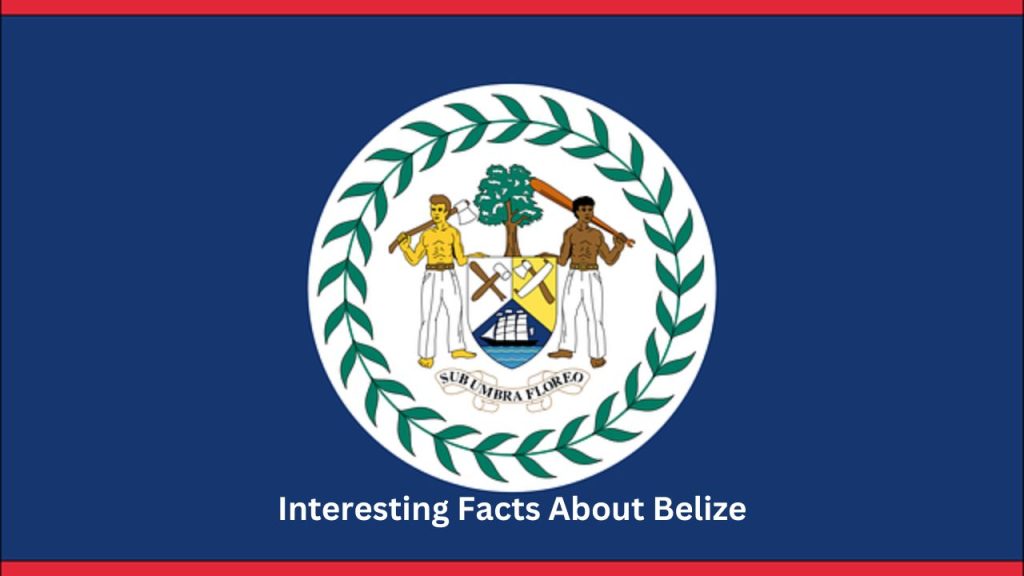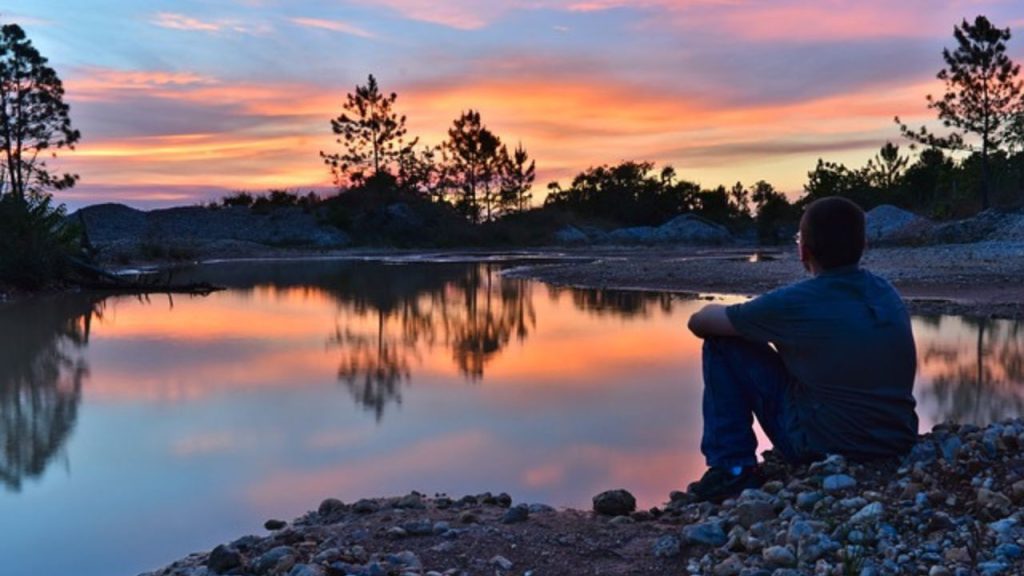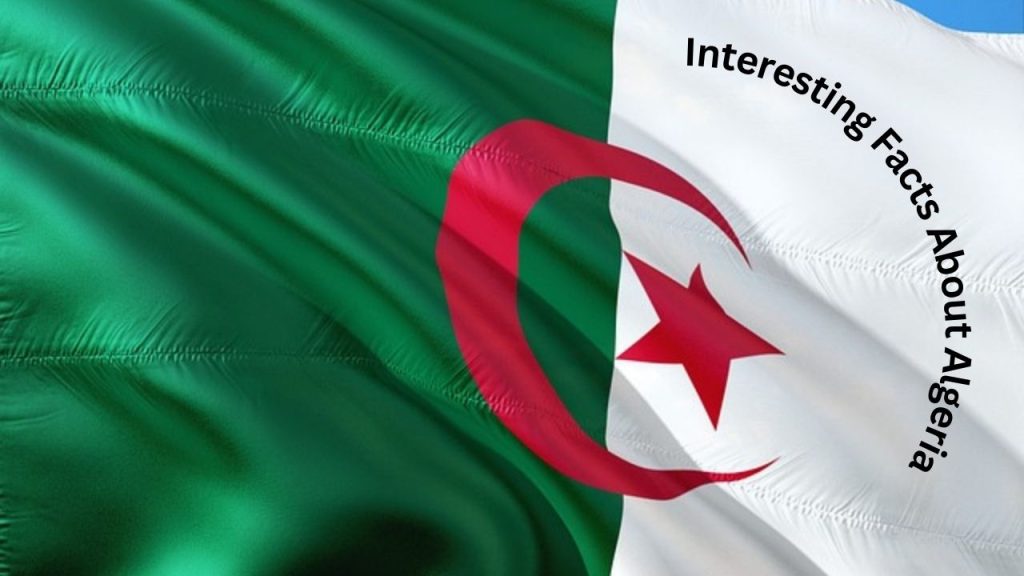Discover 50 interesting facts about Belize from its rich Maya heritage and natural beauty to its vibrant culture and commitment to conservation.
Explore the wonders of this Central American gem!
In Central America sits the little yet intriguing nation of Belize. Belize provides a singular fusion of varied traditions and unspoiled natural beauty, from its verdant jungles to its extensive cultural past. We will look at interesting facts about Belize in this article, which is broken up into sections covering the country’s history, geography, vegetation, and culture.
Interesting Facts About Belize
1. Belize: An American Gem in Central America
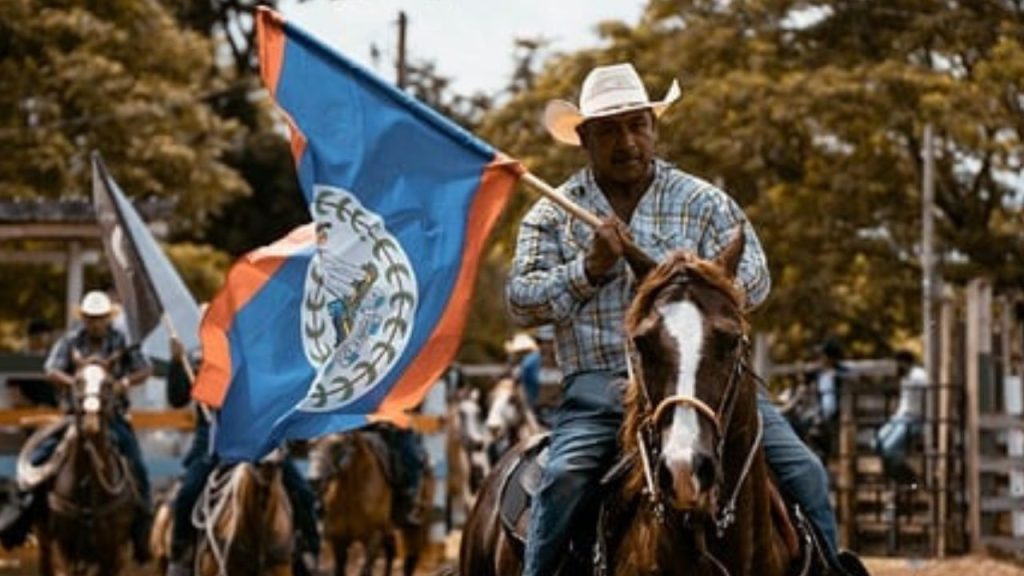
Location and Dimensions
The Caribbean Sea borders Belize to the east, Guatemala to the west and south, and Mexico to the north is where Belize is situated on the northeastern coast of Central America. Belize occupies an area of around 22,966 square kilometers, while being one of the smaller nations in the region.
English is the Language of Officials
Because of its history of British colonization, Belize has English as its official language, unlike the majority of other countries in Central America. Given that Spanish is the primary language in the majority of its bordering nations, this sets it apart.
2. The Maya Civilization: A Mysterious History
Settlements of Maya
Belize is home to many historic ruins and was once the center of the Maya civilization. In Belize, some of the most well-known Maya ruins include Caracol, Xunantunich, and Lamanai.
Advanced Culture of the Maya
The mathematics, astronomy, and architectural skills of the Maya civilization in Belize were extremely sophisticated. Their advanced understanding is demonstrated by the magnificent pyramids and temples that are still standing today.
3. Belize’s Colonization History British Honduras
From the 17th century until its declaration of independence in 1981, Belize was a British colony known as British Honduras. It was the last British colony on the continent of America.
Autonomy and Sovereignty
On September 21, 1981, Belize formally broke away from the United Kingdom. It is a Commonwealth member to this day, with the British monarch continuing to be recognized as the head of state.
4. A Diverse and Multicultural Population
A Combination of Cultures
One of Central America’s most culturally variegated nations is Belize. Its population is made up of several ethnic groups, such as Mennonite, East Indian, Mestizo, Creole, Maya, and Garifuna.
The People of Garifuna
The Garifuna people are an important part of Belizean culture; they are descended from native Arawak and Carib peoples and African slaves. They are renowned for their colorful language, dancing, and song.
5. Belize’s Rich Natural Landscape
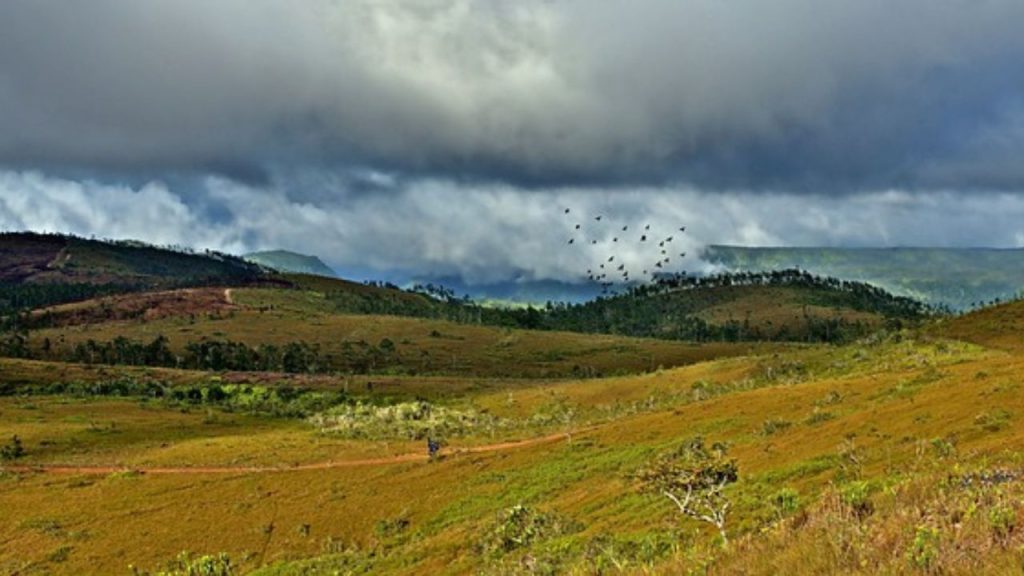
The Barrier Reef of Belize
The second-largest coral reef system in the world, behind Australia’s Great Barrier Reef, is the Belize Barrier Reef, one of the country’s most well-known natural beauties. It is more than 300 kilometers long and supports a wide variety of marine species.
The Great Blue Hole
Situated close to the heart of the Lighthouse Reef lies a massive marine sinkhole known as the Great Blue Hole. Divers travel from all over the world to this UNESCO World Heritage Site because of its pristine waters and rich marine biodiversity.
6. Vibrant Rainforests and Fauna
The Jaguar: The Classic Predator of Belize
The biggest big cat in the Americas, the jaguar, is found in Belize. The first jaguar reserve in the world was created in 1986 and is called the Cockscomb Basin Wildlife Sanctuary.
Unique Types of Birds
With more than 500 different bird species, Belize is a haven for birdwatchers. Belize’s national bird, the keel-billed toucan, is frequently spotted in the country’s jungles and woodlands.
7. Adventure travel and ecotourism
Belize’s Ecotourism
An important sector of Belize’s economy is ecotourism. While touring natural jungles, historic Maya ruins, and vivid coral reefs, tourists may also support environmentally friendly travel practices.
Belize offers two exciting adventure sports:
ziplining beneath lush rainforest canopies and cave tubing, which let guests float through underground river systems while getting an adrenaline boost in breathtaking natural settings.
8. The Diverse Ecosystems of Belize
Mangroves Coastal
Belize’s coastal mangrove forests are important habitats for the country’s marine and wildlife. They are essential to the Belize Barrier Reef’s health because they serve as organic barriers against storm surges.
Forest Reserve of Mountain Pine Ridge
A sizable protected region in western Belize, the Mountain Pine Ridge Forest Reserve is well-known for its granite hills, pine woods, and waterfalls. A variety of fauna, such as armadillos, pumas, and ocelots, may be found there as well.
9. Honoring Belizean Traditions
Belizean Dance and Music
A variety of cultural elements, including as Garifuna, Creole, Maya, and Mestizo customs, are combined to create Belizean music. Throughout the nation, one of the most well-liked forms of cultural expression is the Garifuna dance and music style known as “Punta.”
Day of the Garifuna Settlement
November 19 is Garifuna Settlement Day, a celebration honoring the arrival of the Garifuna people in Belize. Bright parades, traditional music, and dancing are held on this day.
10. Distinctive Belizean Food
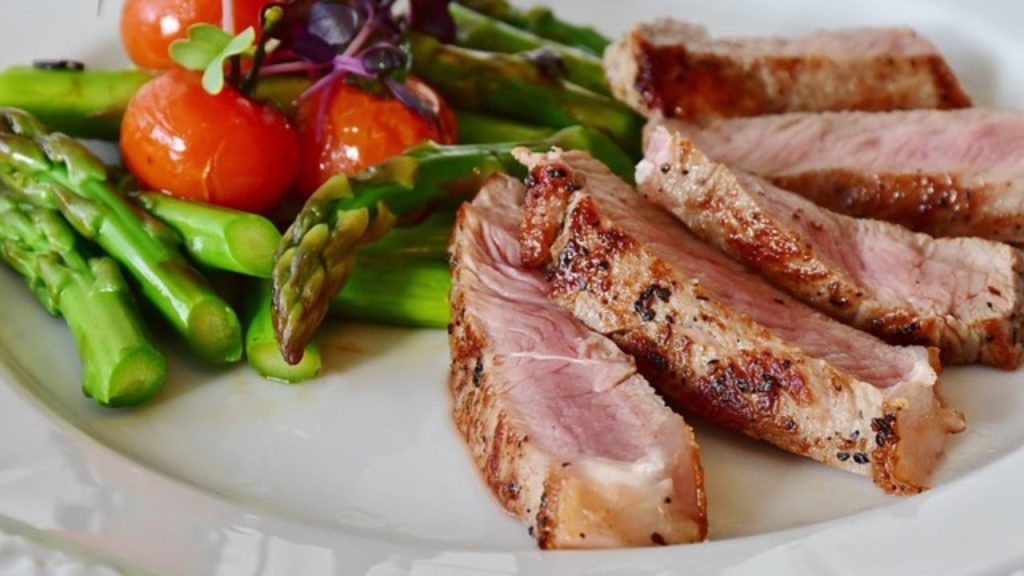
A Combination of Tastes
Belizean cuisine reflects the country’s unique cultural background. Rice and beans, stewed chicken, and fry jacks—a sort of fried bread—are staples. The meal contains elements from Maya, Mestizo, Creole, and Garifuna cookery.
Fresh seafood, lobster, and conch
Belize is well-known for its seafood, particularly its conch and lobster, due to its long coastline. Annual lobster festivals in Belize attract tourists from all over the world.
11. Belize’s Contribution to Environmental Preservation
Preserving Marine Life
In order to maintain the integrity of the Belize Barrier Reef, Belize has taken major steps to safeguard its marine ecosystems, including outlawing oil prospecting in its territorial seas. Because to Belize’s conservation efforts, UNESCO removed the reef off the list of threatened World Heritage Sites in 2018.
11.2 Forest Preservation Initiatives
Belize has created a number of protected areas and nature reserves in addition to sea protection to preserve its biodiversity and rainforests.
12. The Political System of Belize
Democracy in Parliament
Belize is a parliamentary democracy where the prime minister serves as the head of state. Westminster politics in Britain served as the paradigm for the political system.
The British Monarch’s Function
Belize acknowledges the British monarch as its head of state even after attaining independence, and the monarch is represented in Belize by a governor-general.
13. Belize’s Unusual National Symbols
The Flag of the Nation
The national flag of Belize has a blue field in the middle surrounded by two red stripes at the top and bottom. The variety of the nation is represented by the coat of arms, which features a man of European and African ancestry.
The Mahogany Tree Is Our National Tree
Belize’s national tree, the mahogany tree, symbolizes the significance of the mahogany industry to the nation’s economy during the colonial era.
14. Belize’s Economy and Currency
The Currency of Belize
The Belize dollar (BZD), the unit of currency used in Belize, is conveniently tied at a 2:1 ratio to the US dollar, making it appealing to American tourists.
Travel as a Principal Economic Force
The main drivers of Belize’s economy are tourism and agriculture, with exports like sugar, citrus, and bananas having a major impact.
15. The Agricultural Sector in Belize
Exports of Sugar and Citrus
Belize’s agriculture economy is dominated by sugar and citrus cultivation. These crops are necessary for export as well as local consumption.
Sustainable Agriculture’s Ascent
Growing numbers of farmers in Belize are adopting sustainable agricultural practices, emphasizing organic and eco-friendly techniques to protect the nation’s abundant natural resources.
16. Belize’s Caribbean Connection
A CARICOM Member
Belize, a member of the Caribbean Community (CARICOM), a regional association of Caribbean governments, has close links to the Caribbean even though it is technically located in Central America.
Caribbean Cultural Connections
Belize and Caribbean countries have a lot in common culturally, especially when it comes to the Garifuna and Creole groups, whose customs and music are a lot like those of the Caribbean islands.
17. Belizean education

Overview of the Education System
With its basic, secondary, and university levels, Belize’s educational system is based on the British system. Children up to the age of 14 are required to attend school.
University of Belize
The largest public institution in the country, the institution of Belize was established in 2000 and offers a wide range of undergraduate and graduate programs.
18. Holidays & Festivals in Belize
Carnival in Belize
Belizean Carnival is a colorful event with parades, music, dancing, and extravagant costumes that takes place in September as part of the festivities leading up to Independence Day.
Baron Bliss Day
Honoring Henry Edward Ernest Victor Bliss, an Englishman who bequeathed his fortune to Belize, is Baron Bliss Day, which is observed on March 9. There is sailing to commemorate the day.
19. The Marine Reserves and Protected Areas of Belize
Chan Marine Reserve Hol Chan
Situated on Ambergris Caye’s southernmost point, the Hol Chan Marine Reserve is a highly recognized marine protected area in Belize. A popular site for snorkeling and diving, Hol Chan (Maya meaning “little channel”) provides a window into Belize’s thriving aquatic life.
South Water Caye Marine Reserve
Recognized as a UNESCO World Heritage Site, South Water Caye Marine Reserve is the biggest marine reserve in Belize. The preservation of coral reefs, seagrass meadows, and mangroves depends on this protected area, which is a component of the Belize Barrier Reef Reserve System.
20. Caye Culture in Belize
The largest island is Ambergris Caye
Belize’s largest island is Ambergris Caye and is the busiest travel destination. Ambergris Caye, well-known for its breathtaking beaches, crystal-clear waters, and close proximity to the Belize Barrier Reef, is a paradise for lovers of water sports.
Caye Caulker: A Calm Island Atmosphere
Compared to Ambergris Caye, Caye Caulker is a smaller, more laid-back island. With the motto “Go Slow,” Caye Caulker provides guests with a tranquil setting in which to decompress, savor fresh seafood, and appreciate the island’s natural beauty.
21. The Special Cave Systems of Belize
The Muknal Cave of Actun Tunichil
The Actun Tunichil Muknal (ATM) Cave, utilized by the Maya for religious and ceremonial purposes, is one of Belize’s most well-known caverns. Skeletons, pottery, and stoneware from the Maya culture may be found in the cave.
21.2 Cave at Barton Creek
Another important archeological site in Belize is Barton Creek Cave. Canoe exploration of this cave, used by the Maya as well, provides a unique experience for anyone seeking adventure.
22. The River Systems of Belize
The River Belize
The longest river in the nation, the Belize River stretches approximately 290 kilometers from the Caribbean Sea to the Maya Mountains. In the past, it was crucial for trade and transit.
The River New River
The ancient Maya city of Lamanai is located on the New River, one of the longest rivers in northern Belize. Tourists may discover the area’s history and natural beauties by taking boat cruises along the river.
23. The Special Archaeological Sites in Belize
The largest Maya city is Caracol
At 200 square kilometers, Caracol is the biggest Maya archeological site in Belize. The city, which has magnificent pyramids and plazas, was formerly a strong Maya empire.
The Stone Maiden, Xunantunich
“Stone Maiden” (Xunantunich in Maya) is the name of another well-known archeological site. The El Castillo pyramid, its most well-known building, provides stunning views of the surrounding forest.
24. Jaguar Populations in Belize That Are Protected
24.1 The Cockscomb Basin Wildlife Sanctuary
The first jaguar preserve in the world is the Cockscomb Basin Wildlife Sanctuary. This sanctuary, which was created in 1986, is an important home for many animals, including ocelots, pumas, and howler monkeys, as well as the elusive jaguar.
24.2 Jaguar Environmental Initiatives
With research, habitat protection, and community education initiatives, Belize is dedicated to safeguarding its jaguar population.
25. Belize’s Unique Flora
The Black Orchid
The national flower of Belize is the black orchid. This exquisite flower grows wild in Belize’s wet lowlands and woods, its petals ranging from dark purple to black.
The Cohune Palm
In Belize, one of the most prevalent tree species is the cohune palm. Its nuts are gathered for oil, and its enormous fronds are frequently utilized in traditional Maya thatch roofing.
26. The Diversity of Marine Life in Belize
The Manatee of the West Indies
The West Indian manatee, a kind and vulnerable marine creature, lives in Belize. These animals are frequently observed in the shallow coastal waters, especially in the vicinity of Swallow Caye Wildlife Sanctuary.
Gentle Giants, Whale Sharks
The biggest fish in the ocean, whale sharks, use Belize’s waters as a migration hotspot between April and June. These filter-feeding sharks pose little threat to people, despite their size.
27. Customary Arts & Crafts of Belize
Crafts Made by Mayas
Pottery, weaving, and woodcarving are examples of traditional Maya crafts that are still carried out in Belize. Numerous craftspeople produce goods that are a reflection of the antiquated methods that have been handed down through the ages.
Music and Drums of the Garifuna
Handcrafted from wood, usually mahogany or cedar, the Garifuna people are renowned for their drums. During festivals and other festivities, these drums are very important to Garifuna music.
Beautiful Waterfalls in Belize
Thousand Ft. Drop
Standing at the highest point in Belize and Central America, Thousand Foot Falls is situated within the Mountain Pine Ridge Forest Reserve. Views of it are breathtaking as it tumbles down a 290-meter cliff.
The Falls at Big Rock
One of the Mountain Pine Ridge’s best-kept secrets is Big Rock Falls. Swimming and picnicking are common activities at this waterfall, which cascades into a deep, clear pool.
29. The Vital Sports Scene in Belize

Soccer is the most popular sport in the country
With local leagues and national teams participating in international competitions, soccer is the most popular sport in Belize. Passionate local followings are inspired by football teams around the nation.
Customary Kayak Competitions in Belize
Among the nation’s most thrilling athletic occasions is the La Ruta Maya Belize River Challenge. Worldwide competitors compete in this multi-day canoe race along the Belize River.
30. The Biodiversity Hotspots of Belize
Crooked Tree Wildlife Sanctuary
The wetlands and birding possibilities at Crooked Tree Wildlife Sanctuary are well-known. Numerous species are visible to visitors, one of which is the endangered jabiru stork, which is one of the world’s biggest flying birds.
Community Baboon Refuge
The Community Baboon Sanctuary is really home to black howler monkeys, sometimes referred to as “baboons” in the area, despite its name. The sanctuary is a joint effort among local landowners to safeguard the habitat of these monkeys.
31. The Numerous National Parks in Belize
The National Park of Chiquibul
With an area of more than 414,000 acres, Chiquibul National Park is the biggest national park in Belize. A wide variety of species, such as harpy eagles, tapirs, and jaguars, may be found there.
31.2 National Park of Blue Hole
Blue Hole National Park, which is inland and distinguished by its stunning limestone sinkhole and hiking paths that lead to cave systems, should not be mistaken with the saltwater sinkhole.
32. The Tapir, the National Animal of Belize
The Alpine Cow
The mountain cow, or Baird’s tapir, is the national animal of Belize. The shy herbivore that lives in Belize’s tropical woods is the tapir, despite its enormous size.
Conservation Activities for Tapir
The Baird’s tapir is listed as endangered because of habitat degradation, and Belize is dedicated to saving it. Programs for conservation concentrate on protecting habitat and informing the public about the value of tapirs to the environment.
33. The Maritime History of Belize
Belize’s Pirate Havens
The coast of Belize was a well-liked haven for pirates in the 17th and 18th centuries. A band of British pirates and loggers known as the Baymen built towns along the coast and drove out Spanish encroachment.
The St. George’s Caye Battle
Spanish and British soldiers fought each other at the Battle of St. George’s Caye in 1798. The incident is commemorated on September 10th every year, and the British victory guaranteed that Belize remained under British rule.
34. Belize’s Unique Small-Town Charm
San Ignacio: An Adventure’s Gateway
The vibrant town of San Ignacio is situated in western Belize and is well-known for being close to the Mountain Pine Ridge, caverns, and Maya ruins. Travelers looking for outdoor experiences often use it as their base.
Placencia: A Paradise on the Peninsula
Situated on a tiny peninsula in southern Belize, Placencia is a charming little fishing community. It is well-known for its relaxed vibe, beaches, and snorkeling.
35. Belize’s Weather and Climate
A climate of tropicality
The year-round mild weather is characteristic of Belize’s tropical climate. The rainy season, which coincides with hurricane season, lasts from June to November throughout the nation.
Hurricanes and other Natural Disasters
Because Belize is located along the Caribbean coast, it occasionally experiences hurricanes and tropical storms. The nation’s rugged natural scenery remains tenacious and draws tourists from all over the world in spite of this.
36. The Value of Protecting Coral Reefs
Projects for Coral Restoration
Belize has launched coral restoration initiatives in response to environmental issues, including coral bleaching. In these endeavors, fragments of coral are grown in nurseries and then transplanted to damaged reefs.
Coral’s Contribution to Belize’s Economy
Coral reefs are essential to Belize’s economy because of their significance in the environment as well as in both fishing and tourism. For many Belizeans, maintaining the reef means securing their livelihood.
37. The Sacred Maya Sites of Belize
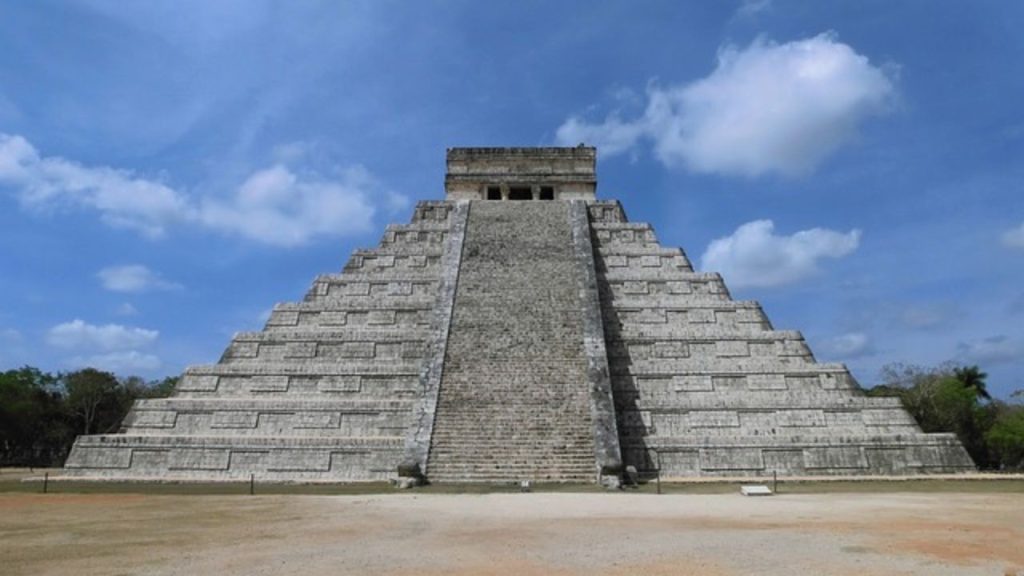
Altun Ha: An Aquatic Location
Altun Ha, which translates as “Rockstone Pond” in Maya, was a significant ceremonial and commercial hub in prehistoric times. The Temple of the Masonry Altars is the most well-known building there.
Crocodile Underwater in Lamanai
Lamanai, which translates to “Submerged Crocodile,” is one of the biggest Maya ceremonial sites in Belize. The site has well-preserved temples and relics and is situated alongside the New River.
38. The Expanding Tourism Sector in Belize
Eco-Tourism in Belize
Belize has established itself as a top destination for ecotourism. Visitors are drawn to the country’s dedication to sustainable tourism practices, which strive to safeguard its natural resources and animals.
Cruise Tourism in Belize
Belize has grown in popularity as a stopover for Caribbean cruises in recent years. Key sites including the Belize Barrier Reef, historic Maya towns, and regional markets are frequently visited by cruise ship guests.
39. The National Independence of Belize
1981’s Gain of Independence
Belize won complete independence from the United Kingdom on September 21, 1981. The nation, which combines a constitutional monarchy with parliamentary democracy, is now a member of the Commonwealth of Nations.
Commemorating Independence Day
One of the most significant public holidays in Belize is Independence Day. Parades, concerts, and cultural events take place around the nation as part of the festivities.
40. English is the official language of Belize
Using English as Your First Language
The only nation in Central America with English as its official language is Belize. This sets Belize apart from its neighbors who speak Spanish and is a reminder of its colonial past under British authority.
Multilingual Belizeans
Many Belizeans speak Spanish, Kriol, and indigenous languages like Maya and Garifuna in addition to English. The country’s heterogeneous population is demonstrated by the diversity of its linguistic landscape.
41. Volcanic Origins of Belize
The Geological Formation of Belize
The Mesoamerican area, which included Belize, was created millions of years ago by volcanic action. The country’s hilly terrain still contains the ruins of these extinct volcanoes.
Volcanic soil’s Influence
Because volcanic soil is so rich, it is perfect for farming. Part of what makes Belize’s farmlands and lush jungles possible is the volcanic soil that covers the country.
42. Butterfly Farms in Belize
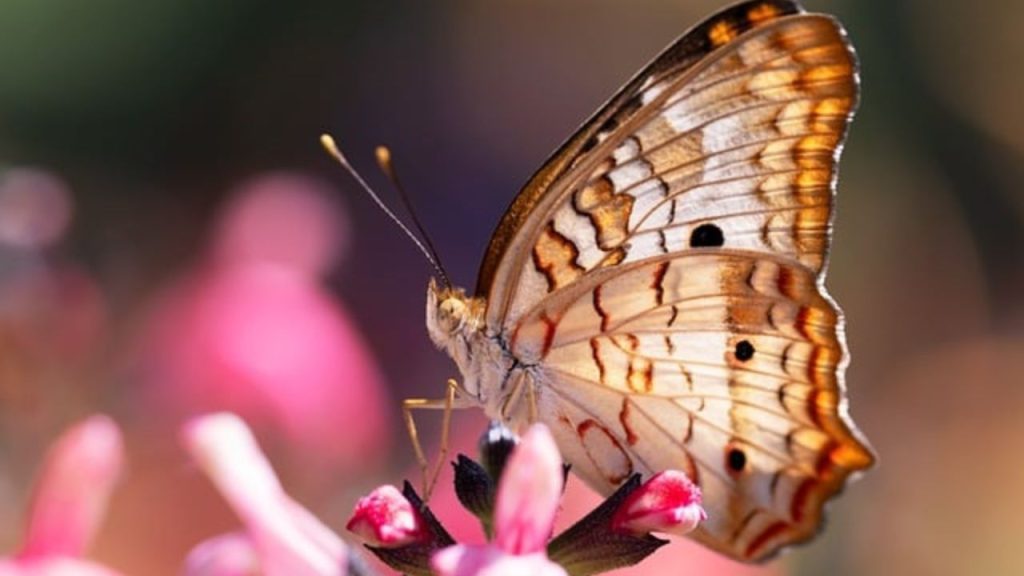
The Butterfly Farm in Belize
Numerous butterfly farms that support the preservation of local butterfly species may be found in Belize. Visitors may observe species like the Blue Morpho up close and learn about the life cycle of butterflies.
Conservation of Butterflies
In Belize, butterfly farms are essential to the preservation of threatened species and public awareness of the value of preserving these fragile animals.
43. Exports of Belizean Agriculture
The Main Export: Sugar Cane
One of Belize’s main agricultural exports is sugar cane. Since the colonial era, the sugar business has been the main driver of the national economy, and Belize is still a major exporter of sugar to other countries.
Banana and Citrus Production
Belize is a significant producer of citrus fruits, bananas, and sugar. The national economy is considerably boosted by the export of these crops to the US, Europe, and other countries.
44. Belize’s Position in Global Conservation
Belize’s Commitment to Environmental Protection
Belize is a pioneer in global conservation initiatives, especially those related to the maritime environment. The nation has put laws into place to safeguard its rainforests, coral reefs, and endangered animals.
Collaborations with International Organizations
Belize collaborates closely with global institutions like the United Nations and the World Wildlife Fund (WWF) to safeguard its natural resources for coming generations.
45. The Maya Chocolate Tradition in Belize
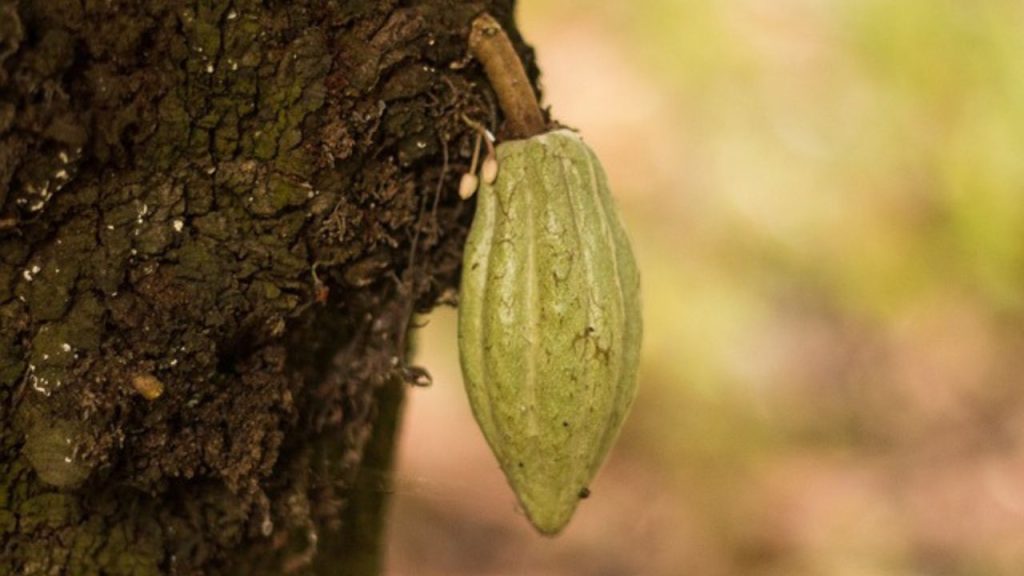
The Plant Cacao
Cacao, the plant that is used to make chocolate, was initially cultivated by the Maya people of Belize. Cacao cultivation and processing are still traditions in Belize, especially in the southern areas.
Belizean Chocolate Festivals
Belize celebrates its long heritage with cacao by holding yearly chocolate festivals. Visitors may taste and learn about the production process of Belizean chocolate at these events, which also include local chocolate producers.
46. The Keel-Billed Toucan, Belize’s National Bird
The Bright Keel-Billed Toucan
The keel-billed toucan, which is recognized as Belize’s national bird, is distinguished by its vivid beak and remarkable look. Often seen throughout Belize’s woods, these birds serve as a testament to the natural splendor of the nation.
Belize’s Toucan Conservation Program
In Belize, efforts are still being made to safeguard many bird species, including the keel-billed toucan. The protection of these birds’ habitats is greatly aided by national parks and wildlife sanctuaries.
47. A Cave Tubing Adventure in Belize
A Cave Exploration Through Tube
In Belize, cave tubing is a well-liked adventurous sport that allows guests to glide through subterranean river networks using inflatable tubes. The amalgamation of leisure and discovery renders it an indispensable encounter.
Archaeological Reserve of the Nohoch Che’en Caves Branch
One of the best places in Belize for cave tubing is the Nohoch Che’en Caves Branch Archaeological Reserve. Enjoy a leisurely float along the river and discover old Maya cave systems at this rare chance provided by the reserve.
48. The Mayan Calendar’s Contribution from Belize
Belize’s Maya Astronomers
The Maya calendar and astronomy were greatly advanced by the Maya civilization, which flourished in Belize. Maya astronomers recorded heavenly occurrences and produced an intricate calendar system that is highly regarded until now.
The Phenomenon of 2012
The conclusion of a cycle in the Maya Long Count calendar, which happened in 2012, prompted international interest in Maya culture. Belize, with its rich Maya legacy, became a focus point for researchers and visitors alike during this time.
49. Sustainability of Belize’s Fish Stocks
Ecological Fishing Methods
Belize is dedicated to sustainable fishing techniques to protect the long-term health of its fish stocks. The country has developed marine protected areas and no-take zones to safeguard key fish habitats.
The Invasion of the Lionfish
The invasive lionfish presents a threat to Belize’s marine ecosystems. Lionfish culls have been arranged by local communities and conservationists to manage the number of this non-native species and save Belize’s coral.
50. The National Heroes of Belize
The nation’s founding father, George Cadle Price
Because of his part in guiding Belize into independence, George Cadle Price is regarded as the “Father of the Nation”. Price served as the nation’s first prime minister and was an advocate for both economic growth and social fairness.
Philip Goldson: An Advocate for Liberty
Politician and activist Philip Goldson represented the rights of the Belizean people. He is recognized for his support of the handicapped population and his contributions to the nation’s independence movement.
Conclusion
Belize is a little country with a lot of energy that is rich in historical importance, cultural diversity, and scenic beauty. A wealth of intriguing information and experiences can be found in the nation, which includes its distinct ecosystems like the Belize Barrier Reef and its ancient Maya legacy.
Because of its strong sense of national identity, diversity and devotion to conservation, Belize is a genuine treasure in Central America.
Belize never fails to wow, whether you want to explore the breathtaking aquatic life, stroll through verdant jungles, or delve into the intricate history of the nation. It’s a country where history and modernity collide, making it a genuinely exceptional travel destination that never fails to enthrall and motivate tourists. Hope you like all these interesting facts about Belize.

